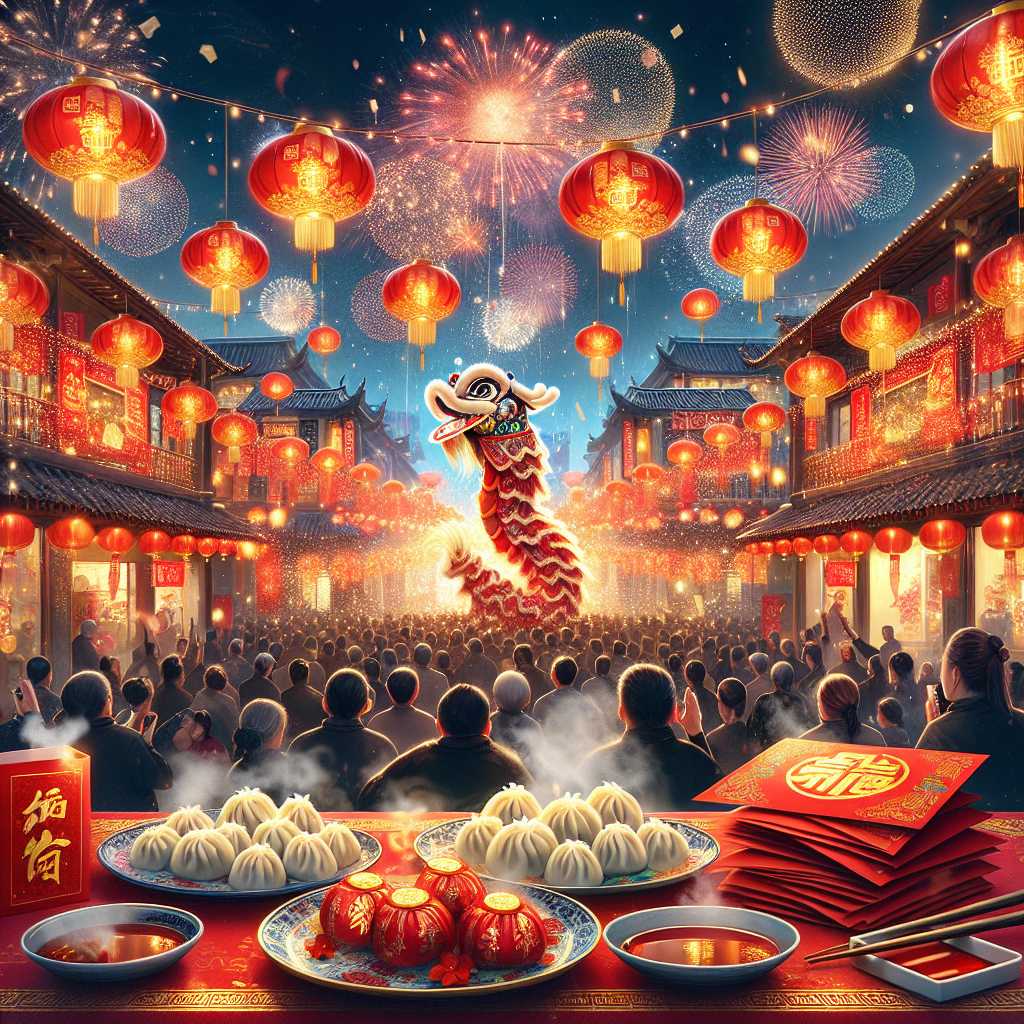Understanding Lunar New Year: A Celebration of Tradition and Culture
Lunar New Year, also known as Spring Festival in China and by other names across different countries, is a significant holiday that marks the beginning of the lunar calendar. This festival is rich in traditions and is observed by millions of people around the world, particularly in East Asia and Southeast Asia.
Origins and Significance of Lunar New Year
The Lunar New Year has its roots in ancient agricultural society. It is tied to the lunar-solar calendar, which bases its months on moon phases and typically adds an extra month every few years to remain aligned with the seasons. The festival historically signified the end of winter and the beginning of spring, symbolizing new beginnings, a time to honor household and heavenly deities as well as ancestors.
Customs and Traditions Across Cultures
Different cultures have their distinct ways of celebrating Lunar New Year, imbuing the festival with a diverse array of customs.
China: Spring Festival Reverence
In China, where it is called the Spring Festival, the Chinese Lunar New Year prompts the largest annual mass human migration globally as individuals return home for family reunions. Fireworks displays are a traditional spectacle, believed to ward off evil spirits. Red decorations adorn homes, signifying luck and joy, and money is gifted in red envelopes (hongbao). The festival begins on New Year’s Eve with a reunion dinner, where dishes served have symbolic meanings such as wealth and prosperity.
Vietnam: The Festive Tết Atmosphere
In Vietnam, Tết Nguyên Đán, or just Tết, sees families spruce up their homes with peach blossoms (in the north) or apricot blossoms (in the south), representing life and good fortune. Foods like bánh chưng (sticky rice cakes) hold historical symbolism.
Korea: Seollal Celebrations
Korean Lunar New Year, known as Seollal, involves profound ancestor worship ceremonies called charye. Koreans wear traditional hanbok clothing, play folk games, and enjoy special dishes such as tteokguk (rice cake soup), symbolizing a fresh start to the year and additional age.
Malaysia & Singapore: Embracing the Spring Festival
In multi-ethnic Malaysia and Singapore, celebrations manifest with lion dances, arrays of lanterns, open house events where various racial communities visit each other’s homes which have been prepared with new year decorations.
Global Spread and Modern Celebrations
With increasing mobility and diaspora communities planting roots across different continents, Lunar New Year celebrations stretch well beyond traditional boundaries. Parades, dragon dances, cultural festivals, and food fairs featuring Asian street foods are commonplace in multinational cities around the world.
Economic Impact of Lunar New Year
The holiday also significantly impacts business operations. Consumer spending surges in sectors like retail and travel. Manufacturers often close at this time causing ripple effects in global supply chains. Stock exchanges across Asia recognize this period with prolonged closures aligning with national observances. Consequently, companies strategize around this downtime contending with both demands from increased consumer spending and slower production capacity.
Modernization Challenges
While technology aids in preserving aspects of culture through digitized communication practices allowing families to connect globally online during Lunar New Year, modernization poses challenges. Younger generations in rapidly developing urban areas may prioritize work over tradition, leading to changes or declines in certain customs.
Festival Foods and Symbolic Meanings
The food consumed during Lunar New Year is steeped in symbolism aimed at ensuring good fortune for the coming year. In China, fish (yú) is eaten as it sounds like ‘surplus’ indicating prosperity; dumplings (jiǎozi) resemble ancient gold ingots promising wealth; noodles signify longevity; glutinous rice cakes (niángāo) represent progress or promotion due to their pronunciation being similar to ‘年高’, meaning ‘year high.’
In Korea, besides tteokguk eaten on Seollal for good luck and growing a year older symbolically, jeon (a type of pancake) represents children due to its round shape.
The Zodiac Connection
Each Lunar New Year is connected to one of twelve animals in the Chinese Zodiac cycle. 2023 saw the arrival of the Year of the Rabbit, considered peaceful and lucky. People born in each animal’s year are said to have particular attributes associated with that animal.
Lunar New Year with Modern Twists
Increasingly, technology is integrated into Lunar New Year customs. Virtual red packets are used through smartphone apps within China and abroad simplifying the traditional giving of cash. Online retailers see spikes as shopping fest quantitative when in alignment with peaks centering around festivities. Performances are livestreamed allowing wider participation.
Notes
Image Description
An image showcasing a vibrant display set for Lunar New Year celebrations containing traditional symbols such as red lanterns whose glow radiates against a night sky bustling with firework splendor. In the foreground, there are steaming plates of dumplings flanked by chopsticks while red envelopes containing money packets sit at the corner of the table inscribed with ‘luck’ in golden calligraphy. In the backdrop is a dragon dance performance capturing attention amidst festive crowd clusters witnessing this majestic ritual under lantern-strewn streets demonstrating universal festive fervor supporting this ancient yet adapting tradition.
